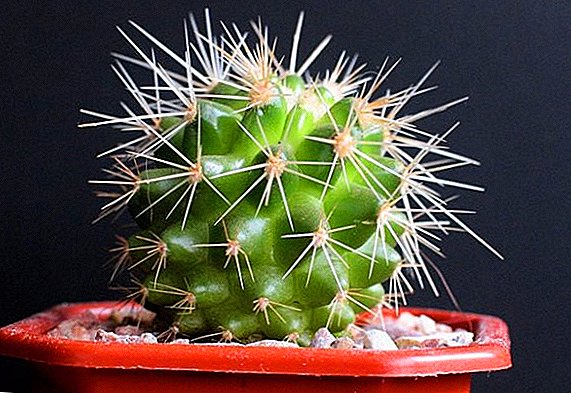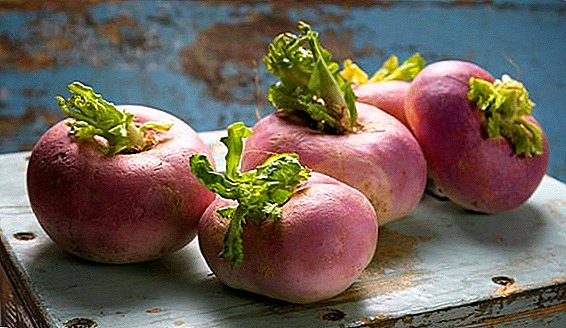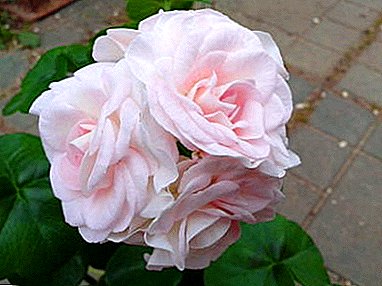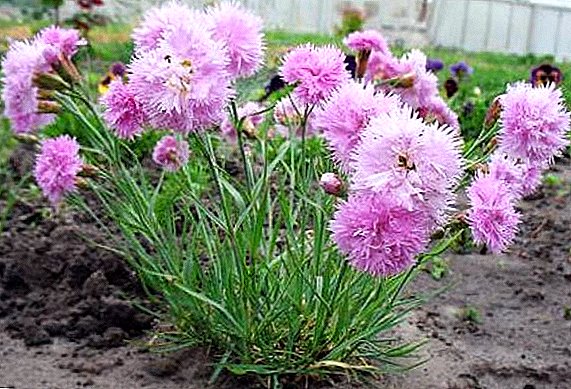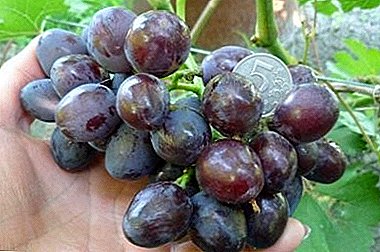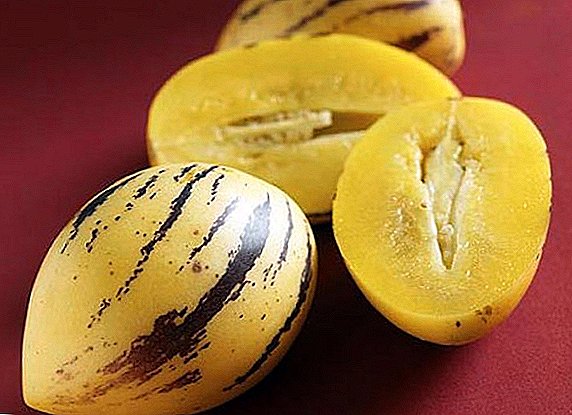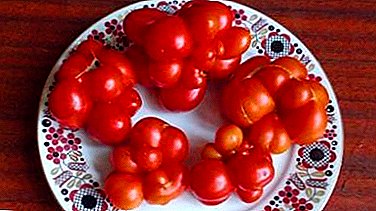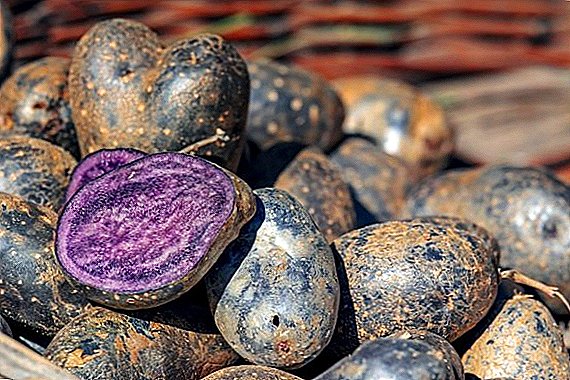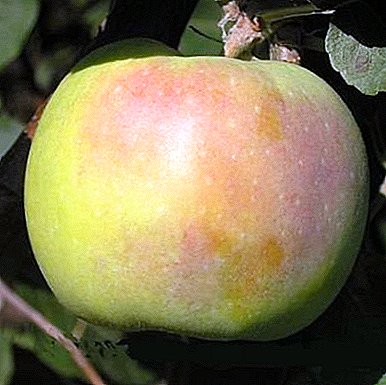
Apple Orlovsky Sinapa very much appreciated by experienced gardeners, despite the fact that this is the latest in ripening type of apple.
Trees reach large sizes. Fruiting comes early.
The fruits are famous for their high organoleptic properties and high biological value.
What kind is it?
Oryol Sinap belongs to the late winter variety. Apple tree is a group of winter-hardy species. Fruit storage periods are considered high. However, in order to increase these periods, it is necessary to ensure their proper storage for the winter:
- optimal temperature is zero;
- storage in wooden containers (racks, containers, boxes);
- dark room;
- relative humidity 90-95%;
- preliminary calibration by the size of fruits;
- Each variety is stored in separate containers.
The winter varieties also include the following: Altynai, Idared, Antonovka dessert, Golden Delicious and Granny Smith.
Pollination

"Sinap Orlovsky" is self-fertile. This is one of the biggest advantages.
Regardless of weather and climatic conditions, this variety will produce stable yields.
But the presence in the vicinity of apple pollen of another variety will further increase the productivity of Sinapa.
Ideally, plant lanes of two varieties at a distance of five meters from one another.
Description variety "Orlovsky synapse"
A massive tree with dark green leaves on a lush crown and multi-colored fruits.
It is characterized by rather large dimensions and widely spreading, but not a dense crown. There are not very many branches on the tree, but they are very powerful and located at an angle of 90-110 degrees. Fruiting on twigs and kolchatka.
Cranked shoots, medium in size. Lentils are not large in size, are present on the tree in small quantities. The leaf is even, large, well-pubescent, dark green in color, has an obovoid shape.
Medium, often above average. On one tree grow fruits of the same size. The shape is rounded conical. The color of the apple is golden yellow with a slight reddish blush. The stem of a tree of this variety is short.
The cup is usually closed. The flesh of the apple is uniform, juicy, has a creamy greenish color. The aroma is mild. The average organoleptic score is 4.5-4.7.
Chemical composition of Sinap Orlovsky apple:
- sugar (fructose, sucrose, maltose) - 9.4%;
- titrated acids - 0.50%;
ascorbic acid - 13.8 mg per 100 g; P-active substances 195 mg per 100 g; pectic substances - about 9%.
Excellent taste and usefulness are also demonstrated by the following varieties: Anis, Medunitsa, Dessert Petrova, Glory to the winners, Winter Beauty.
A photo
In the photo apple "Sinap Orlovsky":




Breeding history

Apple variety Orlovsky Sinap was born in 1995 in the All-Russian Research Institute for Breeding of Fruit Crops and the All-Union Research Institute of Horticulture. I.I. Michurin.
Obtained by hybridization of two varieties:
The inventors of the variety are E.N. Sedov, V.K. Zaets, N.G. Krasova, T.A. Trofimova.
Growing region
The natural growth zones are several regions of Belarus and the following regions of Russia:
- Northwestern;
- Middle Volga;
- Central.
The variety gets along well in other regions with proper planting and compliance with the elementary rules of care (see below).
In these regions, the following varieties also showed themselves quite well: Yellow sugar, Golden Kytayka, Mantet, Kandil Orlovsky and Antonovka ordinary.
Yield
Apple Orlovsky Sinapa begins to bear fruit in the fourth year after planting.
In favorable climatic conditions ripen in the last decade of September. The consumer period begins in November and ends in May.
The average yield of apple trees - 170 centners per hectare. An average of 80 pounds of fruit is removed from one tree.
Planting and care
From care directly depends on the yield of apple. When planting a tree using classic fertilizer.
The tree is easily affected by bitter pitting, and therefore IMPORTANT use soil with enough calcium.
 "Orlovsky synapse" - late winter variety of apple.
"Orlovsky synapse" - late winter variety of apple.
Planting this variety is desirable in one of two periods:
- spring (late April);
- in the fall (end of September - beginning of October).
However, for this grade still recommended autumn.
Tips for planting apple varieties "Sinap Orlovsky":
- purchase seedlings with a developed root system and purchase them in a zone with the same climatic conditions;
- landing on a sunny territory;
- choose a young seedling, then it adapts more quickly to the soil on the plot where it is grown;
- planting areas should be well drained;
- to make the tree grow strong and bring the maximum yield, it is recommended to use loam soil;
- plant trees at a distance of 3-4 m one from another;
- properly prepare the landing hole.
TIP: If there is no loam, you can dig a hole 1 meter deep and, with the same diameter, fill it with sand, compost and peat crumb. Planting in this way will create even better conditions for seedling germination.
The upper layer of the excavated earth is mixed with the lower layer and the following fertilizers are introduced:
- 18-20 kg of manure;
- 250 grams of wood ash;
- 250 g of superphosphate;
- 100 grams of potassium sulfate;
- 150 g of calcium nitrate.
The pit is filled with a mixture of earth with fertilizer for 2/3. From above they pour fertile soil without fertilizers. Pit watered and again fill the layer of fertile soil.

The first two years it is important that the apple tree was tied to a wooden peg (it is better to use a linden or hazel tree).
The next year after planting, in the spring, it is important to form a deciduous apple crown. It is necessary to trim the ends of each branch.
It is desirable for the first four to five years not to give the apple fruit to form (it is necessary to pick 80-100% of the flowers).
In the first year in April, it is necessary to irrigate trees with mixtures that protect against pests. This procedure should be performed twice:
- when buds began to swell on branches;
- before blooming buds.
Further, the apple tree does not need any special fertilizer. Basic care during the first five years after planting:
- tying trees to protect against rodents and hares (material - parchment, lapnik);
- mulching with humus pristvolnyh circles;
- hilling ground to a height of twenty centimeters.
Diseases and pests
Trees varieties "Sinap Orlovsky" are characterized by moderate resistance to various diseases. Most often it is:
- powdery mildew;
- scab;
- bitter pimples.
Mealy dew is a fungal disease. A characteristic sign of the disease is the appearance of the mycelium fungus in the form of white bloom on the leaves of trees.
Most often, the disease manifests itself after heavy rains.
Infection occurs on the tree from the bottom up, until it completely attacks the tree. The best way to fight this disease is to prevent it, which consists of:
- pollination of colloidal sulfur and copper compounds;
- the use of varieties with high resistance to the disease;
- destruction of the affected elements;
- fertilization of potash and phosphorus type.
 The scab primarily affects the leaves of the tree, and then moves to the fruit. The reason for the appearance of this fungus is most often the stagnation of air inside the crown of a tree or increased humidity.
The scab primarily affects the leaves of the tree, and then moves to the fruit. The reason for the appearance of this fungus is most often the stagnation of air inside the crown of a tree or increased humidity.
The first signs of scab are the appearance of green-brown spots on the leaves, also in a large number of small brown, forming a crust, spots on the fruit. To avoid scab damage, it is important to isolate the apple tree from other crops in the garden, carefully monitor the plant and constantly disinfect and fertilize the soil.
Bitter pitting often develops due to an insufficient amount of calcium in the soil, an excessive dose of nitrogen fertilizers, high humidity, a late harvest period, as well as an incorrect storage regime. The disease manifests itself as dark brown depressed spots and affects the fetus in two ways:
- on the tree;
- during storage.
Methods for the prevention of bitter pimples:
- Calcium chloride spraying during the growing season;
- timely harvest;
- proper storage of apples (see above).
As for the pests, the most common are the apple miner moth, crust, hawthorn, fruit sapwood and silkworms. How to protect your garden from them, read the special articles of our site.
The apple variety of Orlovsky Sinap has a good yield and brings beautiful fruits with high biological value. With special preparation, the sapling will germinate on any soil.
The tree does not require special care. Medium resistant to diseases. In case of defeat by pests, treatment does not require much effort.


